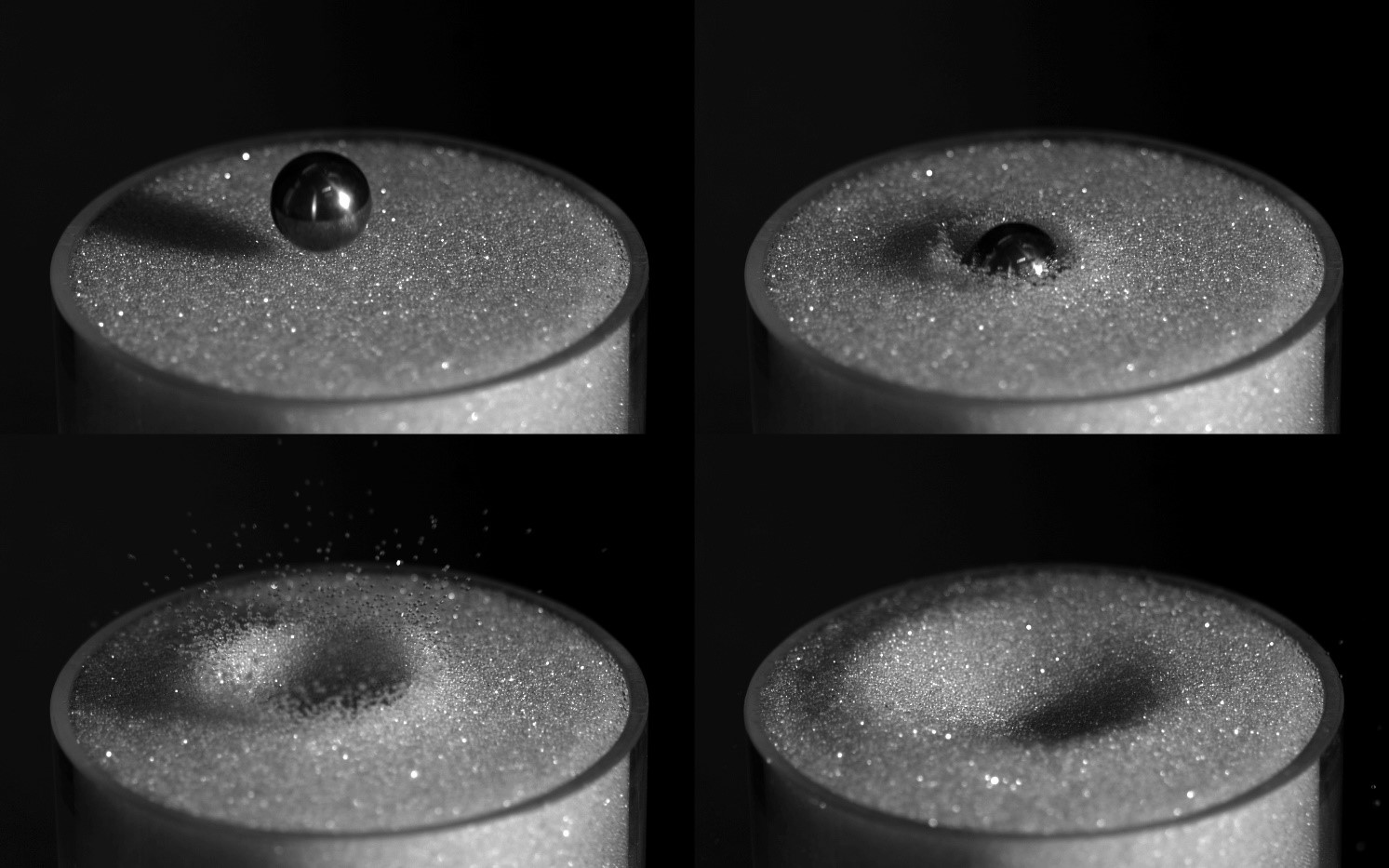Follow us on Google News (click on ☆)

Sequence of the projectile's impact in the granular medium composed of microbeads.
© Y. Bertho
Unlike fluids and solids, the mechanical behavior of granular media is not governed by well-established physical laws. However, numerous fields require the ability to predict how a projectile will penetrate soils and materials composed of grains, such as sand, gravel, powders, or cereals in silos. Applications range from the InSight space mission, tasked with studying the Martian soil temperature up to about 16 feet (5 meters) deep, to reforestation efforts by dropping seeds from planes or helicopters.
There are two scenarios, depending on whether the projectile rotates or not during its motion. Researchers from the Laboratory of Fluid Mechanics, Automation, and Thermal Systems (FAST, CNRS/Université Paris-Saclay) and the State University of Campinas (UNICAMP, Brazil) have shown that, at equal fall speed, the faster the projectile rotates, the deeper it penetrates a granular medium.
They quantified the effectiveness of the maneuver by a ratio between the rotational speed and the impact speed. Within the speed ranges studied, the projectiles penetrate up to 15% deeper with rotation. This is the first substantial demonstration that rotation aids in ground penetration.
To achieve this, the scientists developed an experimental setup that allows a spherical projectile to impact at a controlled speed, varying its drop height, into millimeter-sized glass beads. These beads are contained in a rotating vessel, as it is much easier to control the rotation of the granular medium than that of the projectile, which might deviate from a straight path.
The researchers maintained sufficiently low speed ranges to keep the beads in place, ensuring no differences in mechanical forces whether the granular medium or the projectile rotates. They discovered that during burial, rotation facilitates the fluidization of the granular medium around the projectile. This reduces the pressure under the projectile, allowing it to penetrate more easily.
From this, the researchers developed a physical model capable of predicting the burial depth of the projectile based on its fall speed and the rotation of the granular medium. They are now attempting to model the morphology of the craters produced by such impacts and the trajectory of the ejected grains.
References:
Penetration of a spinning sphere impacting a granular medium.
D. D. Carvalho, Y. Bertho, E. M. Franklin, and A. Seguin.
Phys. Rev. E 109, 054902 (2024).
https://doi.org/10.1103/PhysRevE.109.054902.
Article available on the open archive platform Arxiv.